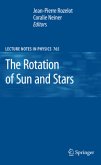High Quality Content by WIKIPEDIA articles! Retrograde motion is in the direction opposite to the movement of something else, and is the contrary of direct or prograde motion. The idea of retrograde or prograde motion is useful in three contexts: (1) for describing the orbits of celestial bodies, (2) for describing the rotations of celestial bodies, and (3) for explaining the backtracking by planets which is visible to observers on Earth (See the article: Apparent retrograde motion). In reference to celestial bodies, motion can refer to the orbit of one body about another body or about some other point, or to the rotation of a single body about its axis, or to the precession or nutation of the axis. In reference to celestial systems, retrograde motion usually means motion which is contrary to the rotation of the primary, that is, the object which forms the system's hub.
Bitte wählen Sie Ihr Anliegen aus.
Rechnungen
Retourenschein anfordern
Bestellstatus
Storno








